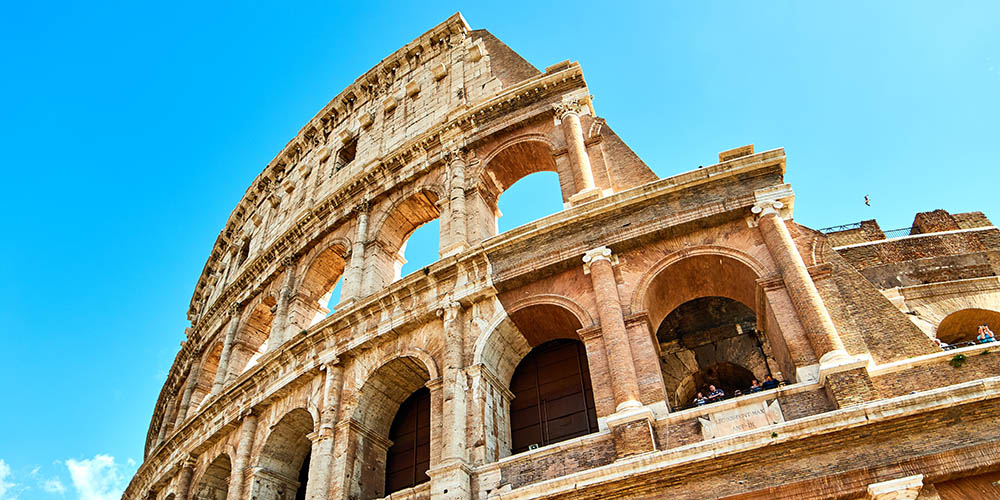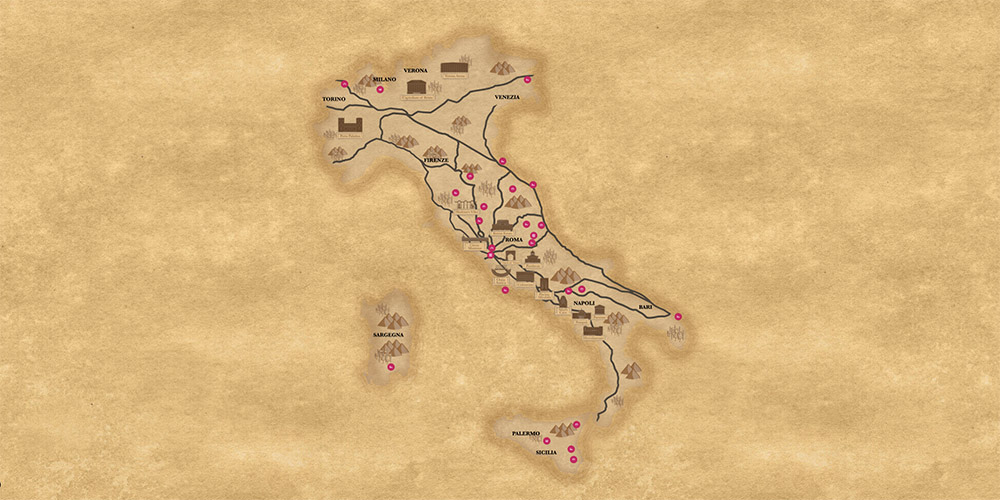
For travelers looking to soak up as much of the country they’re exploring as possible in the time that they have there, a road trip is a great option — especially with kids and all the gear that they need. Taking to the open road means you can map out the perfect route, factoring in every sight you want to see and customize your experience to suit your family. Where better to road trip than the home of the Ancient Romans, one of the most influential societies on our modern world? After all, a recent study dubbed Italy the most scenic road trip destination in the world.
Luxury Italian travel experts, Citalia, have mapped out the ultimate 21-stop Italian road trip that best captures ancient Italy in the modern day. One of the cultural capitals of the world, Italy is a country that offers so much to see, eat and enjoy that it can feel impossible to fit all of the best bits into one trip. But this road trip lays out the must-see sights from Ancient times – from the wildly popular to the virtually unheard of – so that families can experience the Ancient Roman world in modern day.

Read on for the ultimate road trip for any cultural explorer, with 21 historic hotspots to discover:
- Parco Archeologico di Ercolano / Herculaneum: What was once an Ancient Roman town, Herculaneum was destroyed but remarkably preserved by an eruption of nearby Vesuvius in 79 AD. Stopping at this UNESCO World Heritage Site is a must for those wanting to experience Ancient Rome.
- Paestum: Located neat Salerno, Paestum is actually a major ancient Greek city making it a great spot to dip into Greek culture on your tour of Ancient Rome.
- Pompeii: Before being buried under a 13–20-foot thick layer of ash in 79 AD, Pompeii was a flourishing city. The ash effectively preserved almost all the city, and thanks to careful archaeological excavations much of the city is visible to this day.
- Sibyl’s Cave in Cuma: Supposedly the former home of Sibyl, this cave located near Naples has been featured in multiple classical texts such as The Aeneid and Ovid’s Metamorphosis.
- Piscina Mirabile: Created to supply the military fleet with fresh drinking water, Piscina Mirabilis holds up to 92,000 cubic feet of water and is the largest of its kind in the world.

- Colosseum: Estimated to hold between 50,000 and 80,000 spectators, the Colosseum was used to host gladiator contests and public spectacles, such as mock sea battles.
- Roman Forum: For centuries, the Roman Forum which was also known as Forum Romanum was the main of Roman life and has been said to have been the most celebrated meeting place in the world.
- Pantheon: Almost two thousand years after being built, the Pantheon serves as a church and remains the world largest unreinforced concrete dome.
- Ostia Antica: Translating as “ancient mouth”, this stunning harbor city situated close to modern Ostia, near Rome, is now an archaeological site featuring well-preserved buildings and mosaics.
- Arch of Titus: Erected in the 1st Century AD, Arch of Titus has provided inspiration for a large number of triumphal arches built since — including the Arc de Triomphe in Paris.
- Amphitheater Alba Fucens: In the Imperial Age, Alba Fucens was a very prosperous location. Today the theater is used for cultural events, concerts and other theatrical events.
- Aurelian Walls: Enclosing 1,400 hectares (3,500 acres), the wall built between 271 AD and 275 AD surrounds all the seven hills of Rome.
- Arch of Constantine: Situated between the Colosseum and the Palatine Hill, this arch was ordered to be constructed by the Roman Senate after Constantine I’s victory over Maxentius in 312 AD.
- Circus Maximus: Located between the Aventine and Palatine Hill, the Circus Maximus was Ancient Rome’s first and largest stadium. Used for chariot racing and Roman religious festivals the stadium could accommodate over 150,000 people.
- Hadrian’s Villa: The stunning remains of Hadrian’s Villa were once home to the Roman Emperor Hadrian and are now a UNESCO world heritage site. The ancient architecture and idyllic backdrop make the site perfect to explore.
- Amphitheatre at Rusellae: Among the Etruscan coastal towns is Rusellae, this amphitheatre is known as one of the only Roman amphitheatres nearby.
- Faesulae S.r.l /Theatre at Faesulae: Located near the beautiful city of Florence, the Theatre at Faesulae is built into the natural rock of the hills offering scenic views across the stunning Tuscan scenery.
- Palatine Towers: Once used as a gate in the Roman Age to provide access through the city walls of Julia Augusta, Palatine Towers stands as a good example of the Roman influence in Turin.
- Archaeological site of Grotte di Catullo: In recent years, this ruin has been used as a filming location. The villa is named after the poet Catullus, who owned a house in the area but in actuality, it is unknown to whom the house belonged.
- Capitolium o Tempio Capitolino / Capitolium of Brixia: Rediscovered in 1823 — after being buried by a landslide — the Capitolium used to be the church of Brixia which is one of the most important cities in northern Italy.
- Verona Arena: Built in 30 AD, Verona Arena was the setting for the Shakespeare classic Romeo and Juliet and due to its amazing acoustics, the arena is still used today for performances such as operas and concerts.


